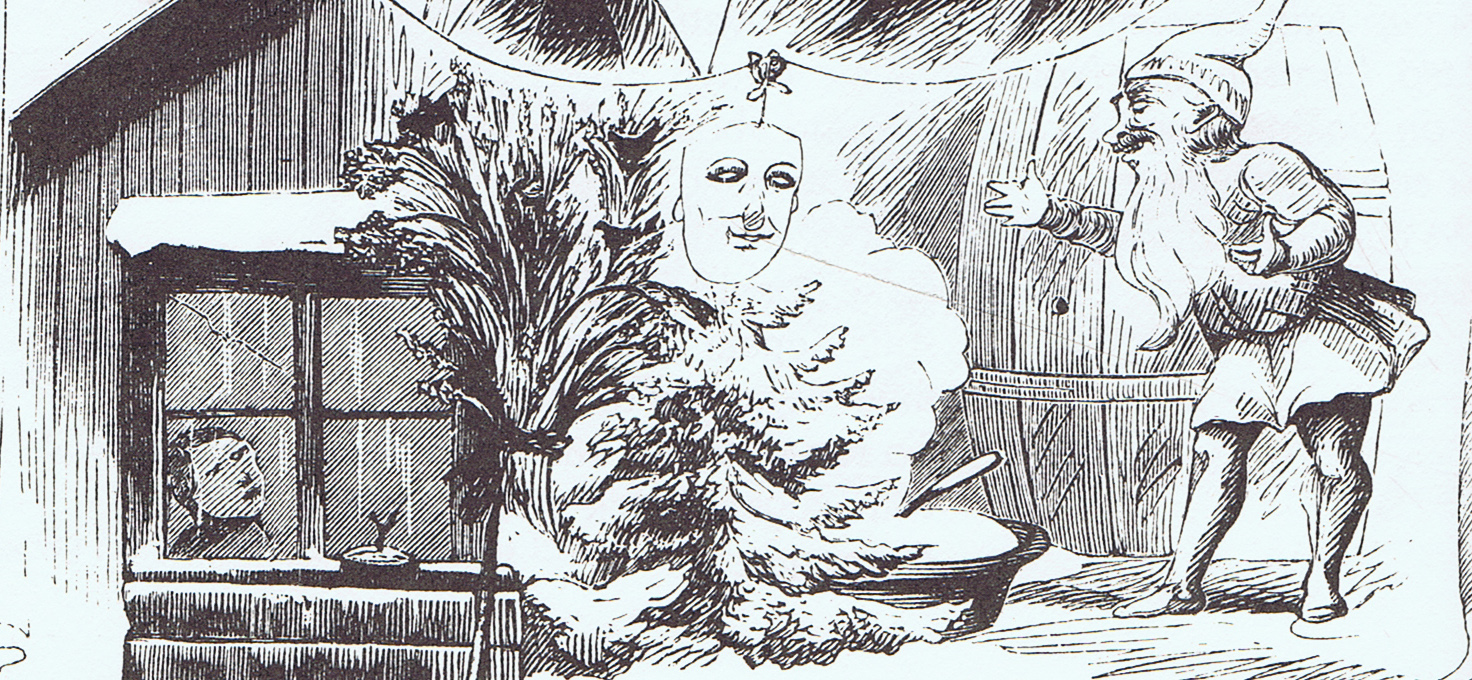History, Traditions, and Recipes for the Third Week Of The Jul Tide Season
Posted by Walter Hanson on Dec 15th 2017

The Third Week of the Jul Tide was focused on getting the house ready for the Jul Celebration and culminated on the Winter Solstice. Back in Viking Times the Winter Solstice was the beginning of the Jul Festivities. As time moved on and Christianity became more prevalent December 24th replaced the Winter Solstice as the beginning of the Jul Festivities. That being said much preparation is still to be completed by the 21st.
Back in Viking Times the night of the Winter Solstice was a "Hallowed Eve". That was the night that the spirits of the departed traveled the earth. There were many superstitions that came along with the ride of the Jul Spirits. Fresh straw was spread through the house to welcome Family Members who came to check up on how the family had been taking care of the land. Many people also placed fresh pine boughs under their beds to freshen the room. No one ever slept in their bed that night to provide a place for the Jul Spirits to rest on their travels across the earth.
To keep Evil and Mischievous Spirits at bay, crosses were painted above each window, door and on each mantle in the house. This would ensure that only Blessed Spirits would enter. Even in the Barn crosses were placed above the windows, doors and even above on the rafters.
Today in Scandinavia the Winter Solstice is a time for honoring past members of the family, which is why the Jul Beer must be finished by the eve of the Winter Solstice. The first glass of Jul Beer is poured for those departed members of family, and it is left by the Fireplace for them to find on their ride. I was always amazed as a boy as to how the glass was always empty by the morning, even when I tried to stay up to see the Jul Spirits as they visited the family.
Many last minute things were part of this weeks preparation. Any baking that needed to remain fresh through the Jul Tide were finished up at this time. In my family that always meant Julekake and Kladdkaka. The Kladdkaka, these sinfully good chocolate cakes, were some of the last things out of the oven. Perhaps because they made the house smell so good and they tasted even better. If they were left out longer they would not make it to the Jul Celebration table.
Another thing that has evolved over the years is that the Jul Aquavit was opened up on the eve of the Winter Solstice and shared with relatives along with the Jul Beer. Many families would distill their own Jul Aquavit with a recipe handed down through the family. As the years advanced basement stills have thinned out with only a few devout family distillers still remaining. Today, every Aquavit Company has their own Jul Aquavit. Some stick to time honored recipes, but many create a new Jul Aquavit every year.
I must admit that I like collecting Aquavits and have even taken a class on "Flavoring and Savoring Your Aquavit" through the Norwegian American Museum in Decorah, Iowa. I look forward to sampling the various Jul Aquavits that are available in the US. To serve Aquavit correctly it should be "chilled". I use our insulated Etched Winter Decanter to serve my Aquavit. With its double wall construction it keeps the Aquavit just the right temperature for the evening. It also makes the perfect decanter for anyone who appreciates "Whiskies", whether Bourbon, Scotch or Rye. This year it has been the perfect gift for the man who has everything.
Make your preparations the Jul is coming . . .
Resources:
Scandinavian Etched Winter Decanter
Recipe:
Julekake:
Ingredients:
- 2 cups scalded milk
- 1/2 cup margarine
- 2/3 cup sugar
- 2 tsp salt
- 3 tsp ground cardamom
- 2 cakes yeast
- 1/4 cup lukewarm water
- 2 beaten eggs
- 4 cups flour
- 1 cup light raisins
- 1 cup dark raisins
- 2 8-oz packages candied mixed fruit (also called "glace cake mix")
- 4 cups additional flour
- 1/3 cup warm water (Optional: Substitute Dark Rum or Brandy)
Directions:
- Preheat oven to 350°.
- Pour 1/3 cup warm water (Dark Rum or Brandy) over the raisins and let them sit to soften. Drain before adding to mixture.
- Combine scalded milk, margarine, sugar, salt and cardamom. Cool to lukewarm if milk is still hot from scalding.
- Soften the yeast in the 1/4 cup lukewarm water, and add to milk mixture.
- Add eggs and mix well.
- Add 4 cups flour and beat well. Let rise in a warm place for about 1 hour, until bubbly.
- Add mixed fruit, drained raisins and the rest of the flour.
- Knead on a lightly floured work surface.
- Brush the top of the dough with melted butter and let rise in a warm place until doubled in bulk.
- Divide into 3 parts, and make 3 round loaves or put into three bread pans. Let rise again until doubled.
- Bake 45 minutes to 1 hour at 350 degrees. (I will cover the tops with Aluminum Foil if they are browning too fast.
- Brush
tops with melted butter while hot.
To store, wrap in foil and seal in a storage bag. Can be kept at room temperature. Will keep for 2 - 3 weeks sealed.

